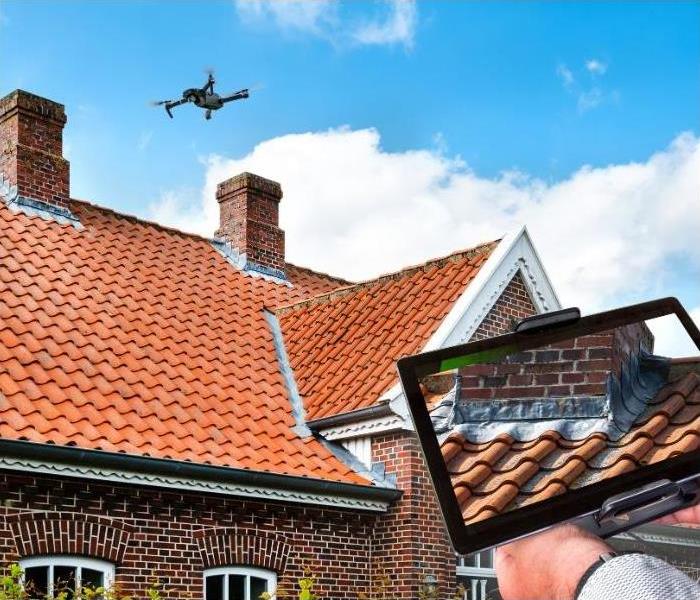Recent General Posts
Advanced Technologies in Disaster Restoration: What's New in the Field?
4/3/2024 (Permalink)
Did you know that advanced technologies are revolutionizing the field of disaster restoration? With the increasing frequency and intensity of natural disasters, finding innovative solutions to aid recovery has become crucial.
These cutting-edge technologies are changing the game from drones for damage assessment to virtual reality for training and simulation.
But what exactly are these advancements, and how do they work? Let's explore the exciting world of advanced technologies in disaster restoration and discover what's new in the field.
Drones for Damage Assessment
Drones are a valuable tool for conducting damage assessments in disaster restoration. With advancements in drone technology, these unmanned aerial vehicles have become an essential asset in assessing and documenting the extent of damage caused by natural disasters. The use of drones for damage assessment provides a unique perspective and allows for more accurate and efficient data collection.
One of the main advantages of drone technology in damage assessment is its ability to access hard-to-reach areas. Drones can navigate through hazardous environments, such as collapsed buildings or flooded areas, where it may be unsafe or impractical for humans to go. By capturing high-resolution images and videos, drones provide a comprehensive view of the damage, enabling restoration teams to make informed decisions and prioritize their efforts.
Moreover, drones equipped with advanced sensors and imaging capabilities can detect structural weaknesses and identify potential hazards that may not be easily visible to the naked eye. Thermal imaging cameras, for example, can detect heat signatures that indicate hidden fires or areas of compromised insulation. This valuable information allows restoration teams to address these issues promptly, preventing further damage and ensuring the safety of both workers and residents.
In addition to their practicality, the use of drones for damage assessment also brings a sense of belonging to the affected communities. By utilizing cutting-edge technology, restoration efforts demonstrate a commitment to the well-being and recovery of the community. Furthermore, the use of drones enhances transparency and communication, as the collected data can be easily shared with stakeholders, insurance companies, and government agencies, fostering collaboration and trust.
Artificial Intelligence for Resource Allocation
With the advancements in technology, disaster restoration efforts can now benefit from the use of artificial intelligence for efficient resource allocation. Artificial intelligence, or AI, utilizes machine learning for predictive modeling, allowing for accurate analysis of data and forecasting of resource needs during disaster restoration efforts. This technology can greatly improve the allocation of resources, ensuring that the right tools, equipment, and personnel are deployed to the areas that need them the most.
Here are four ways AI can revolutionize resource allocation in disaster restoration:
- Optimized Deployment: AI algorithms can analyze historical data and patterns to determine the most effective deployment strategies. By considering factors such as the severity of damage, geographical location, and available resources, AI can allocate resources in a way that maximizes efficiency and minimizes response time.
- Real-Time Monitoring: AI-powered systems can continuously monitor the progress of restoration efforts and adjust resource allocation accordingly. By analyzing real-time data from sensors, drones, and other sources, AI can identify areas that require additional resources or adjust the distribution of resources based on changing conditions.
- Resource Forecasting: By leveraging machine learning algorithms, AI can accurately predict resource needs for future disaster events. This allows organizations to proactively allocate resources and plan for potential challenges, ensuring a more efficient and timely response.
- Secure Data Storage: Blockchain technology provides a secure and transparent platform for storing critical data related to resource allocation. By utilizing blockchain, organizations can ensure the integrity and accessibility of data, preventing unauthorized access or manipulation.
IoT Sensors for Early Warning Systems
IoT sensors play a crucial role in early warning systems for disaster prevention and response. These smart sensors for structural monitoring are revolutionizing the field of disaster restoration by providing real-time data and predictive analytics for disaster risk assessment. By incorporating these advanced technologies, we can enhance our ability to detect and respond to potential disasters, ensuring the safety and well-being of communities.
Imagine living in a world where disasters can be predicted and prevented before they even occur. With IoT sensors, this vision becomes a reality. These sensors are embedded in buildings, bridges, and other structures, constantly monitoring their condition and sending data to a central system. This data is then analyzed using predictive analytics, allowing us to assess the risk of potential disasters such as earthquakes, floods, or hurricanes.
By analyzing data from these sensors, we can identify early warning signs of structural damage or instability. This enables us to take proactive measures to prevent disasters, such as evacuating residents or reinforcing vulnerable structures. In addition, IoT sensors can also be used to monitor environmental conditions, such as temperature, humidity, and air quality, providing valuable insights into potential risks.
The integration of IoT sensors with early warning systems not only improves our ability to prevent disasters but also enhances our response capabilities. For example, in the event of an earthquake, these sensors can detect the intensity and location of the tremors, allowing emergency responders to assess the impact and allocate resources accordingly quickly.
Robotics for Debris Removal
Robotic technology is transforming the process of debris removal in disaster restoration. With the advancements in automated machinery for reconstruction and remote-controlled vehicles for hazardous waste disposal, the cleanup process has become more efficient and safe. Here are some ways in which robotics is revolutionizing debris removal:
- Increased speed and efficiency: Robots are equipped with advanced sensors and algorithms that allow them to navigate through debris-filled areas quickly and efficiently. They can identify and remove debris much faster than manual labor, saving valuable time during the restoration process.
- Improved safety: Debris removal can be a dangerous task, especially in hazardous environments. Robots can be remotely controlled from a safe distance, eliminating the risk to human lives. They can handle heavy objects and navigate through unstable structures without endangering themselves or others.
- Enhanced accuracy: Robots are programmed to identify and differentiate between various types of debris, allowing for targeted removal. They can precisely pick up and sort different materials, separating recyclables from non-recyclables, which promotes sustainable waste management.
- Cost-effectiveness: While the initial investment in robotic technology may be high, it can lead to long-term cost savings. Robots are durable and require minimal maintenance compared to human labor. Additionally, their ability to work continuously without fatigue improves overall productivity.
Virtual Reality for Training and Simulation
The next innovative technology in disaster restoration builds upon the advancements of robotics by utilizing virtual reality for training and simulation purposes.
Virtual reality (VR) is a cutting-edge technology that creates immersive experiences by simulating real-world environments. It offers a unique opportunity for disaster restoration professionals to enhance their training effectiveness.
With virtual reality, individuals can be placed in virtual disaster scenarios where they can practice their skills and decision-making abilities in a safe and controlled environment. This allows them to gain valuable experience and knowledge without the risk of actual harm. By immersing themselves in these virtual environments, they can develop a better understanding of the challenges they may face during disaster restoration efforts.
The immersive experiences provided by virtual reality training have been proven to enhance learning retention and engagement. Studies have shown that individuals who receive training through virtual reality retain information better compared to traditional training methods. This is because virtual reality provides a more realistic and interactive learning experience that stimulates multiple senses, making the information more memorable.
Furthermore, virtual reality training allows for repeated practice and feedback, which is crucial for skill development. Disaster restoration professionals can repeat training scenarios multiple times, refining their techniques and decision-making skills. They can also receive immediate feedback on their performance, allowing them to identify areas for improvement and make adjustments accordingly.
Recap
So there you have it, folks! With advanced technologies like drones, artificial intelligence, IoT sensors, robotics, and virtual reality, disaster restoration has reached a whole new level of efficiency and innovation.
Picture a swarm of drones assessing damage, AI intelligently allocating resources, sensors giving early warnings, robots clearing debris, and people training in virtual reality. It's like a futuristic blockbuster movie, except it's real life.
The future of disaster restoration is here, and it's nothing short of mind-blowing!
Benefits of Installing a Dehumidifier
12/20/2022 (Permalink)
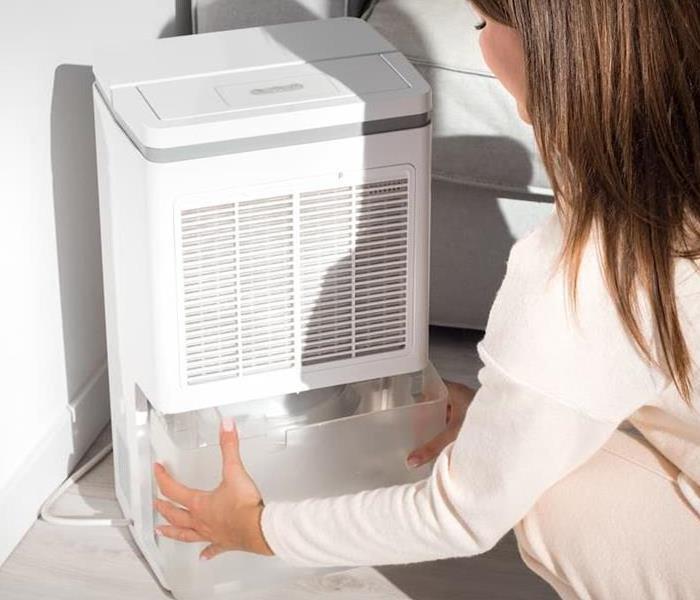 Dehumidifiers can be great proactive solutions against the buildup of mold and mildew.
Dehumidifiers can be great proactive solutions against the buildup of mold and mildew.
When you think of a dehumidifier, you probably think of an appliance that helps remove excess moisture from the air to prevent mold and mildew growth. But did you know installing a dehumidifier in your home has many benefits? Let's look at some of the benefits of dehumidifiers:
Reduces Allergens in the Air
One of the benefits of dehumidifiers is they help reduce allergens in the air. If you suffer from allergies, installing a dehumidifier in your home reduces the number of allergens in the air, making it easier for you to breathe.
Reduced Condensation
One of the most common problems caused by high humidity is condensation on windows and walls. When the air is saturated with moisture, it condenses on surfaces cooler than the air, such as glass or metal. This condensation can lead to water damage and mold growth.
A dehumidifier reduces condensation by removing moisture from the air, creating a drier environment less likely to cause condensation.
Improved Air Quality
High humidity also leads to musty odors and dust mite infestations. Musty odors are caused by mold and mildew growth, which thrive in humid environments. Mold and dust mites can cause respiratory problems, like asthma.
It's essential to keep the air quality high, especially if you have infants or elderly family members living in your home.
Installing a dehumidifier helps remove musty odors and reduces dust mite populations, improving air quality.
Reduced Energy Costs
Running a dehumidifier reduces your energy costs. Since humid air feels warmer than dry air, you might be tempted to turn down your thermostat to compensate. However, this will only lead to higher energy bills.
Dehumidifiers help remove the extra moisture from the air, making it feel cooler and reducing the need to lower the temperature.
Extended Life for Your Home
Your home can also be damaged by high humidity. Wood materials, like flooring, furniture, and trim, can swell and warp when exposed to excessive moisture. Paint and wallpaper peel and blister in humid conditions, and drywall can weaken, sag, and crumble. These problems can be expensive to repair and even require completely replacing certain materials in your home.
A dehumidifier can help protect your home by reducing the moisture in the air. Keeping humidity levels at a comfortable level, you help extend your home's life and avoid costly repairs.
Fewer Pests
Pests like cockroaches, ants, termites, and rodents are attracted to moisture. If your home is humid, you will more likely have an infestation. Reducing the humidity in your home makes it less inviting for these pests. In addition, if you do have pests, they are easier to get rid of if your home isn't as humid.
Reduced Risk of Mold and Mildew
Mold and mildew thrive in humid environments and cause several problems, including respiratory issues, skin irritation, and allergic reactions. In addition, mold and mildew can damage your home, causing peeling paint, warped wood, and crumbling drywall.
A dehumidifier creates an inhospitable environment for mold and mildew, reducing the risks.
Healtheir Plants
Too much moisture can be harmful to your plants. While they need water to survive, they can suffocate and drown in too much of it. Excess moisture in the air encourages mold and mildew growth, harming your plants. Using a dehumidifier helps create the perfect balance of moisture in the air for your plants, keeping them healthy and happy.
Installing a dehumidifier provides many benefits for your home and your health. By reducing the amount of moisture in the air, you create a more comfortable environment and avoid problems like water damage, mold and mildew growth, and pest infestations.
If you struggle with high humidity levels, consider investing in a dehumidifier. For professional help with your indoor air quality, contact SERVPRO of South and Northwest Grand Rapids at 616-622-9700. We're always here to help.
Preparing Your Home for When You Go on Vacation
7/19/2022 (Permalink)
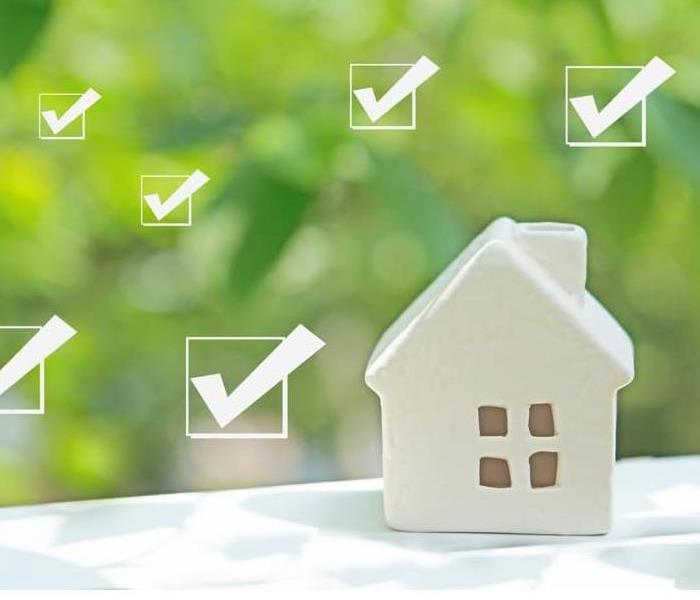 Making a checklist of ways to protect your home is just as important as planning your vacation.
Making a checklist of ways to protect your home is just as important as planning your vacation.
A vacation is the best time to relax and stay worry-free. After getting your luggage ready and checking you have everything you need, it is important to ensure your home is taken care of before leaving. No one wants to come back from vacation to find problems like break-ins, rotten food, or leaking water. While on vacation, you will keep worrying if you didn't prepare your home properly before you left.
Here are some things you should do for peace of mind while on vacation.
Make It Look Like Someone Is There
An unoccupied house is an invitation for burglars to break in and steal your valuables. Even if you are not home, you can still make it look like someone is there, preventing anyone from thinking about breaking in. You can set the lights to turn on and off at specific times, control the TV remotely, and ask a friend to collect your mail while you are on vacation. You can also hire a home sitter to stay at your home, take care of plants, and keep it occupied.
Take Plumbing and Electrical Precautions
You never know when an appliance will break down, and the worst time will be on your vacation. Keeping appliances running while you're not home is an expense and can cause costly problems. So unplug all your small appliances and electronic devices except the TV if you use it remotely. Turn off water valves and electric switches to non-essential rooms. Program your thermostat to save on energy by raising the temperature in the summer for cooling and lowering it in the winter for heating. A smart thermostat can be remotely controlled, giving you full control over it.
Tidy Up
No one wants to come back from a vacation to clean the house. You don't have to deep-clean everything before you leave, but you should tidy the house to sustain the relaxation mode when you return. Make your bed, vacuum, scrub the sinks and toilets, and tidy up each room, so it looks easy on the eye.
Clean Out Your Refrigerator
Before going on vacation, open your fridge and look at what foods are in it. Some foods will spoil after a while, even in the fridge. Freeze foods that can be frozen; eat what you can and toss what you don't want. It would be a good time to wipe the surfaces clean. If you leave for an extended time, you might want to throw out everything and unplug your fridge, as most foods will expire before you return.
Check All Doors and Windows
Right before you open the door to go on vacation, take a tour around your house and check if all entry points are sealed. Go over every door and window to check they are closed tightly and can't be opened easily. If you don't use a door or a window often, check them first as you might forget to lock them.
Take Out the Trash
One of the worst things to forget before going on vacation is taking out the trash. You will return home to awful smells and pest infestations. Ensure you take the trash with you as you go out of the door and run your garbage disposal with water and half a cup of vinegar to keep the stinking smells away.
Preparing your home before leaving on vacation is necessary to avoid unpleasant incidents or serious accidents like flooding or electrical fires. You need to relax and have fun while on vacation, but it can be ruined if you keep worrying about your home. Use these tips to make your home safe and prepared and enjoy your vacation.
Prepare Your Home Before Heading Out of Town
4/1/2022 (Permalink)
 Mike Nitz with SERVPRO South and Northwest Grand Rapids.
Mike Nitz with SERVPRO South and Northwest Grand Rapids.
VIDEO - How To Prepare Your Home Before Leaving on Vacation
Many people are heading out of town soon for spring break or vacation. Here are a few helpful tips we recommend you do before you leave.
1. Leave a ‘lived in’ home. Set timers on lamps and place a hold on packages.
2. Lock more than just the doors. Don't forget to lock all garage entry doors, back doors, and windows. Also, if you have any pet doors, cover them from the inside.
3. Unplug all of your appliances. Mixers, coffee makers, other daily use countertop items. It's amazing how things can short out with minimal interference.
4. Inform your most trusted neighbors. Let them know how long you’ll be away and ask them to check the house and maybe pull your mail.
5. Contact the alarm company and let them know that you'll be gone. Activity from certain dates will be treated as legitimate.
6. Remove outdoor spare or hidden keys.
7. Turn off your water. Shutting the water off, whether it’s the main line, under the toilet or the kitchen sink, will mitigate water damage loss should disaster strike.
If you do come home after a spring break and find a problem, our number is 616-662-9700. SERVPRO of South and Northwest Grand Rapids is locally owned and operated, and we are always glad to take care of you when the unexpected happens.
Have a great vacation and stay safe!
For Fast Service, call SERVPRO!
12/9/2019 (Permalink)
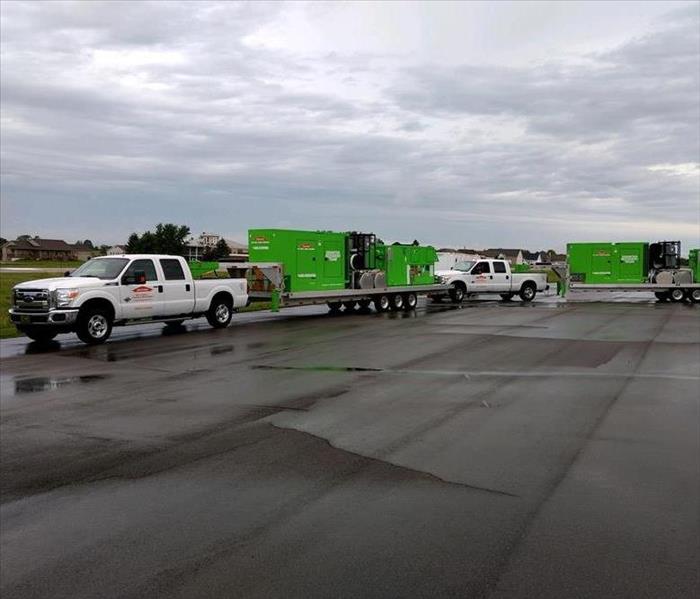 Emergency services of any size are no problem for #SERVPRO. We have the right equipment for any size #waterdamage or #firedamage.
Emergency services of any size are no problem for #SERVPRO. We have the right equipment for any size #waterdamage or #firedamage.
SERVPRO of South and Northwest Grand Rapids provides 24-hour emergency service and is dedicated to being faster to any-sized disaster in the Grand Rapids area. We can respond immediately to your emergency and have the expertise to handle your restoration or cleaning needs.
- 24-Hour Emergency Service
- Faster to Any-Sized Disaster
- Highly Trained Restoration Technicians
- A Trusted Leader in the Restoration Industry
- Locally Owned and Operated
- Advanced Restoration and Cleaning Equipment
Have Questions? Call Us 24/7 – 616-662-9700
Residential Services
Whether your Grand Rapids home needs emergency flood damage or you have mold that needs to be addressed, you can depend on us. Our technicians have extensive remediation and restoration training and can make your property look and be its best. Learn more about our residential services:
- Water Damage Restoration
- Fire Damage Restoration
- Mold Remediation
- Storm Damage Restoration
- Building/Reconstruction Services
Commercial Services
There's never a convenient time for fire or Water damage to strike your Southwest Grand Rapids commercial property. Every hour spent cleaning up is an hour of lost revenue and productivity. So when the need arises for professional cleaning or emergency restoration services we have the training and expertise to respond promptly with highly trained technicians to get your property back to business. Learn more about our commercial services:
https://www.SERVPROnorthwestsouthgrandrapids.com/commercial-restoration-cleaning
- Commercial Water Damage Restoration
Commercial Fire Damage Restoration
It's spring. Here's how to allergy-proof each room of your home
4/10/2017 (Permalink)
Warmer-than-normal weather launched allergy season early this year, pumping up pollen counts across much of the nation. And if you think you can retreat indoors to relieve your sniffles, think again.
Two thirds of people with allergies suffer them year round, said allergist James Sublett, M.D., co-founder of Family Allergy & Asthma in Lousville, Ky. And the leading cause of those year-round allergies are dust mites, animals and cockroaches, he said, all of which make their homes inside of ours.
Outdoor allergens will make it into our homes through normal ventilation, Sublett said. "And of course it gets tracked in, too."
If you can't escape allergens, it's time to go on the attack. Here are Sublett's tips on allergy-proofing each room of your home.
The bedroom
Your bedroom deserves the most attention, Sublett said, since you lie and breathe there for eight or so hours a night. Dust mites live primarily in bedding, so buy a set of high-quality, mite-proof encasements for your pillows and mattress. They should be tightly woven with zippers that seal completely. Wash all your bedding weekly in any temperature of water to kill any mites. Doing this weekly is key as it ensures you eliminate both mites and their eggs before they hatch, Sublett said.
If you're allergic to pollen, it's a good idea to shower at night before bed. And consider keeping your room a pet-free zone, as a Golden Retriever can track in allergens on a high pollen day.
The living room
Your living room, and any space you spend much time in, should have "smooth surfaces as much as possible," Sublett said. Smooth, clear surfaces wipe down easily, such as a hardwood floor or a plastic chair. Window blinds are perhaps preferable to drapes for the same reason, he said. Avoid rugs or carpeting whenever possible.
"I know the carpeting industry doesn’t like this idea, but when you have a carpet, you do have like a big sponge there that collects dust," he said. "Normal activity is going to throw that back up in the air."
If rugs and carpeting are unavoidable, regular vacuuming removes much of the dust. Sublett recommends a respirator mask to protect from particles while cleaning—just make sure it's an N95 respirator that's NIOSH-approved, he said. Finding a high-quality disposable air filter for your furnace is important, too, Sublett said. Most are made to be replaced every three months.
The kitchen
Your biggest enemy in the kitchen is mold. Periodically clean any spots where leaks or spills might occur, including under the sink and your refrigerator's drain pan, Sublett said. When you do clean, avoid products with strong odors or fumes. Sublett prefers a small amount of bleach mixed in a bucket of water with some dishwasher detergent. And seal food in stored containers, leaving nothing that might attract pests such as cockroaches.
The bathroom
Using a ventilation fan when you shower helps cut back on your home's humidity, which should stay under 50% to ensure dust mites lack the moisture to thrive, Sublett said. A humidistat will help you measure it. Avoid humidifiers or vaporizers in the home, too.
The laundry room
Don't leave out piles of damp clothing and towels, Sublett said, which become a welcome mat for dust mites and mold. Ensure your clothes dryer vents to the outside of your home, too, doing away with excess moisture.
http://www.usatoday.com/story/news/nation-now/2017/03/24/s-spring-heres-how-allergy-proof-each-room-your-home/99563062/?utm_source=feedblitz&utm_medium=FeedBlitzRss&utm_campaign=usatodaycomnation-topstories
Have Questions? Gives a call – SERVPRO of Southwest Grand Rapids 616-662-9700
For Immediate Service in Southwest Grand Rapids, Call SERVPRO
4/10/2017 (Permalink)
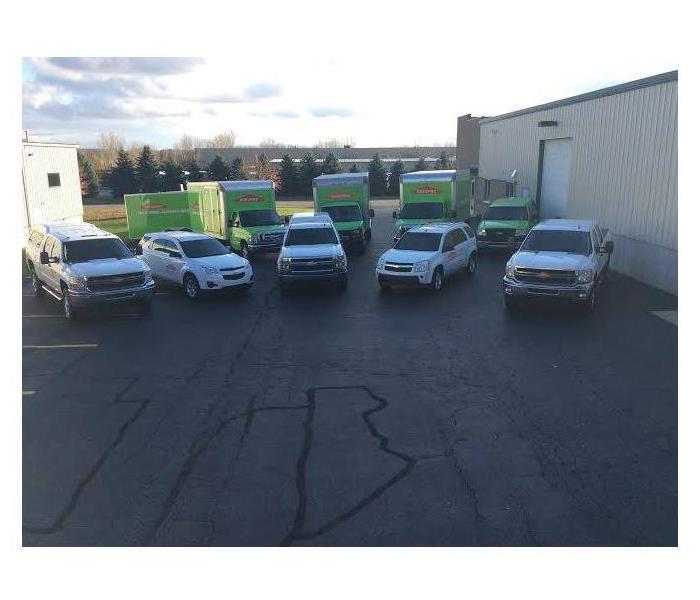 Southwest Grand Rapids Residents: We provide immediate service day or night!
Southwest Grand Rapids Residents: We provide immediate service day or night!
SERVPRO of Southwest Grand Rapids provides 24-hour emergency service and is dedicated to being faster to any-sized disaster in Southwest Grand Rapids. We can respond immediately to your emergency and have the expertise to handle your restoration or cleaning needs.
- 24-Hour Emergency Service
- Faster to Any-Sized Disaster
- Highly Trained Restoration Technicians
- A Trusted Leader in the Restoration Industry
- Locally Owned and Operated
- Advanced Restoration and Cleaning Equipment
Have Questions? Call Us 24/7 – 616-662-9700
Residential Services
Whether your Southwest Grand Rapids home needs emergency flood damage or your upholstery cleaned, you can depend on us. Our technicians have extensive cleaning and restoration training and can make your property look its best. Learn more about our residential services:
- Water Damage Restoration
- Fire Damage Restoration
- Mold Remediation
- Storm Damage Restoration
- Cleaning Services
- Building/Reconstruction Services
Commercial Services
There's never a convenient time for fire or Water damage to strike your Southwest Grand Rapids commercial property. Every hour spent cleaning up is an hour of lost revenue and productivity. So when the need arises for professional cleaning or emergency restoration services we have the training and expertise to respond promptly with highly trained technicians to get your property back to business. Learn more about our commercial services:
http://www.SERVPROsouthwestgrandrapids.com/commercial-cleaning
- Commercial Water Damage Restoration
Commercial Fire Damage Restoration





 24/7 Emergency Service
24/7 Emergency Service
